 STEVE TEMPLE
.
September 30, 2021
.
All Feature Vehicles
STEVE TEMPLE
.
September 30, 2021
.
All Feature Vehicles
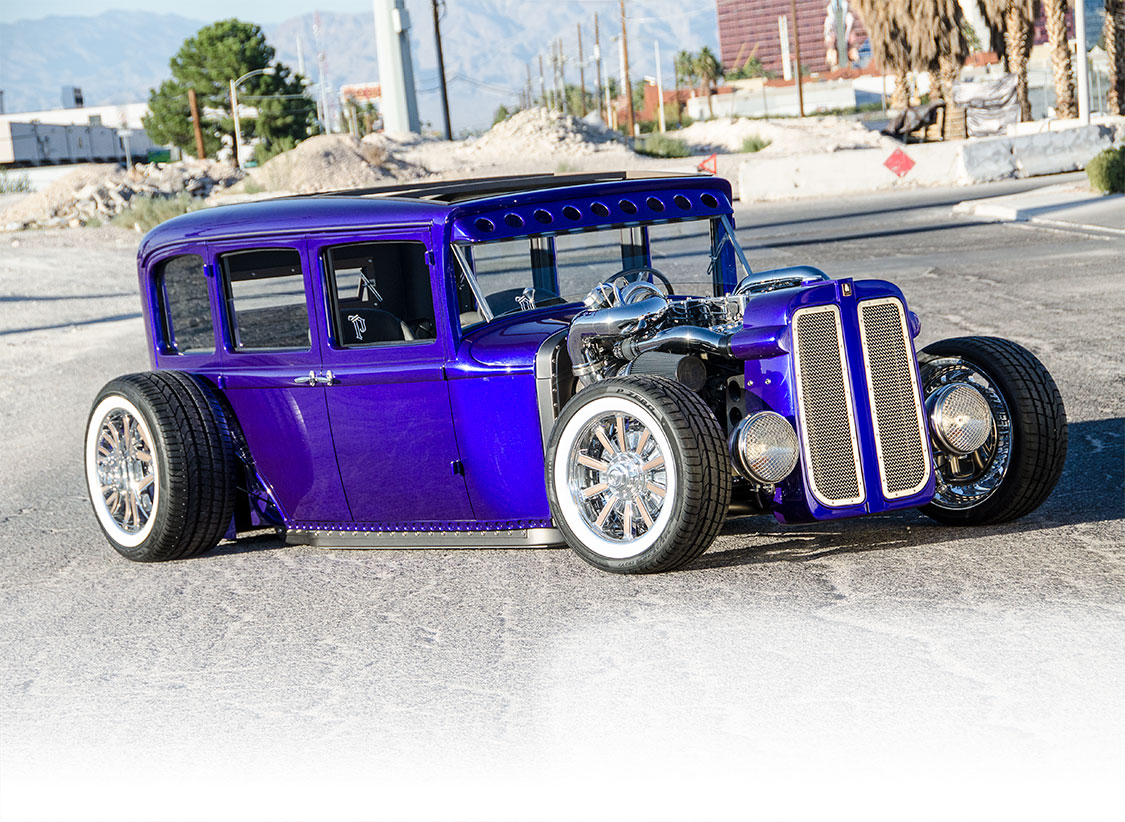
The vehicle of choice for most diesel engine enthusiasts is a pickup with a really powerful engine. And that was initially the plan for a client (who prefers to remain nameless) of ACR’s Andrew Faris. On the other hand, Faris’s client has three kids and likes his Sunday drives. So a four-door sedan made more sense from a comfort standpoint—but he couldn’t let go of his diesel obsession. Why not build on the best of both worlds, a stylish street rod with a 1,200hp Cummins? Sounds plum crazy, and the result is this insane ’29 Plymouth.
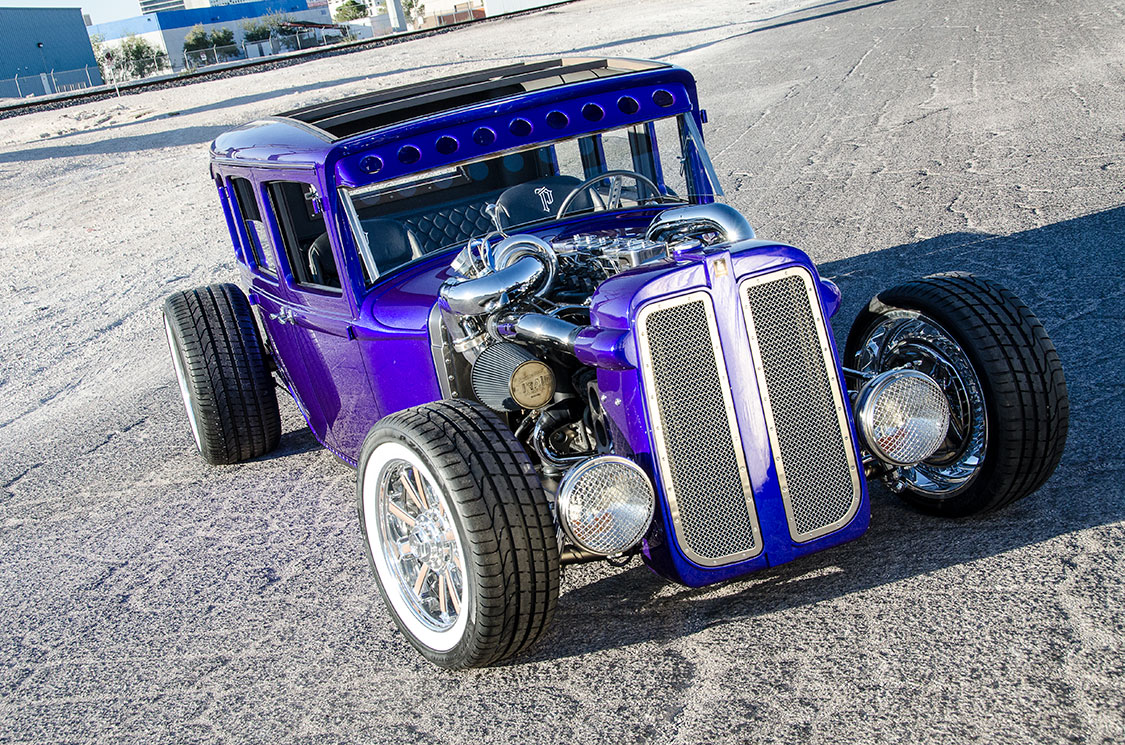
The project went through other changes midstream, as the original concept called for a rat rod in bare metal. “I wanted a modern industrial theme to the car using metal and wood detail pieces,” Faris recalls. Obviously the treatment went bonkers from there, as the trim and finish on this street rod is not merely industrial, but maniacal in quality.
How did it go off the rails? Faris started out sensibly enough, by selecting the tire sizes: Pirelli PZero 325/30, 19 inches in the front and 21 in the rear. Then he set the original tin body on the floor and moved the tires around until they looked right.
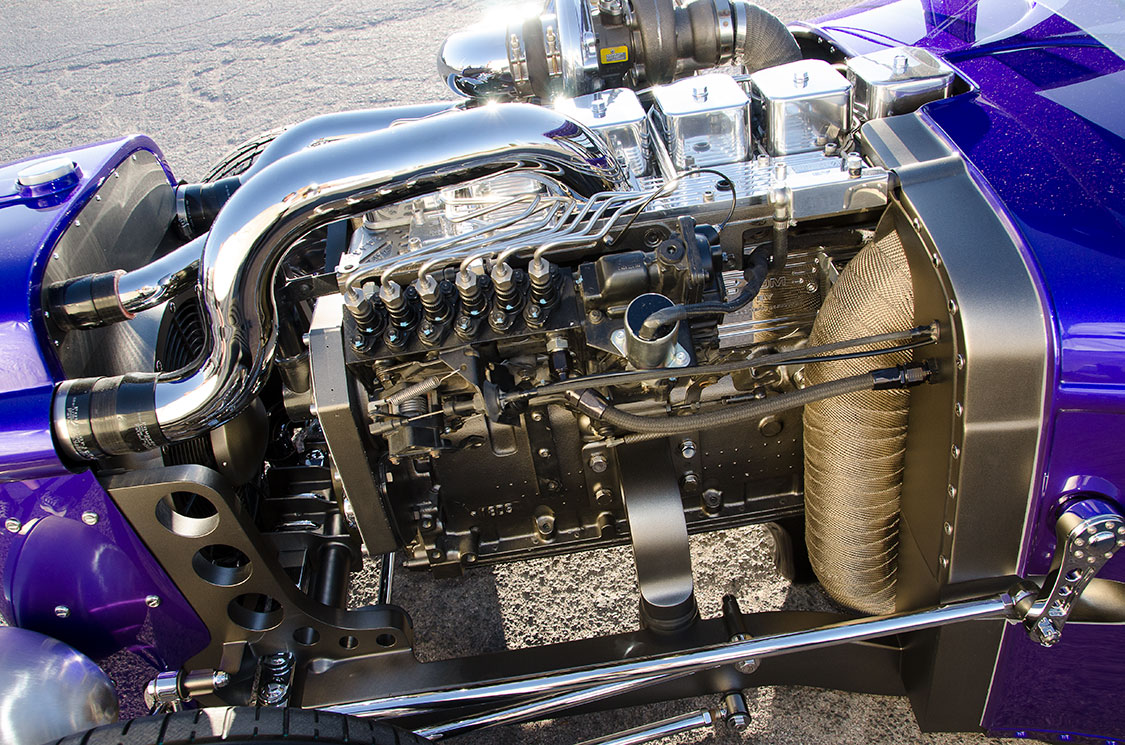
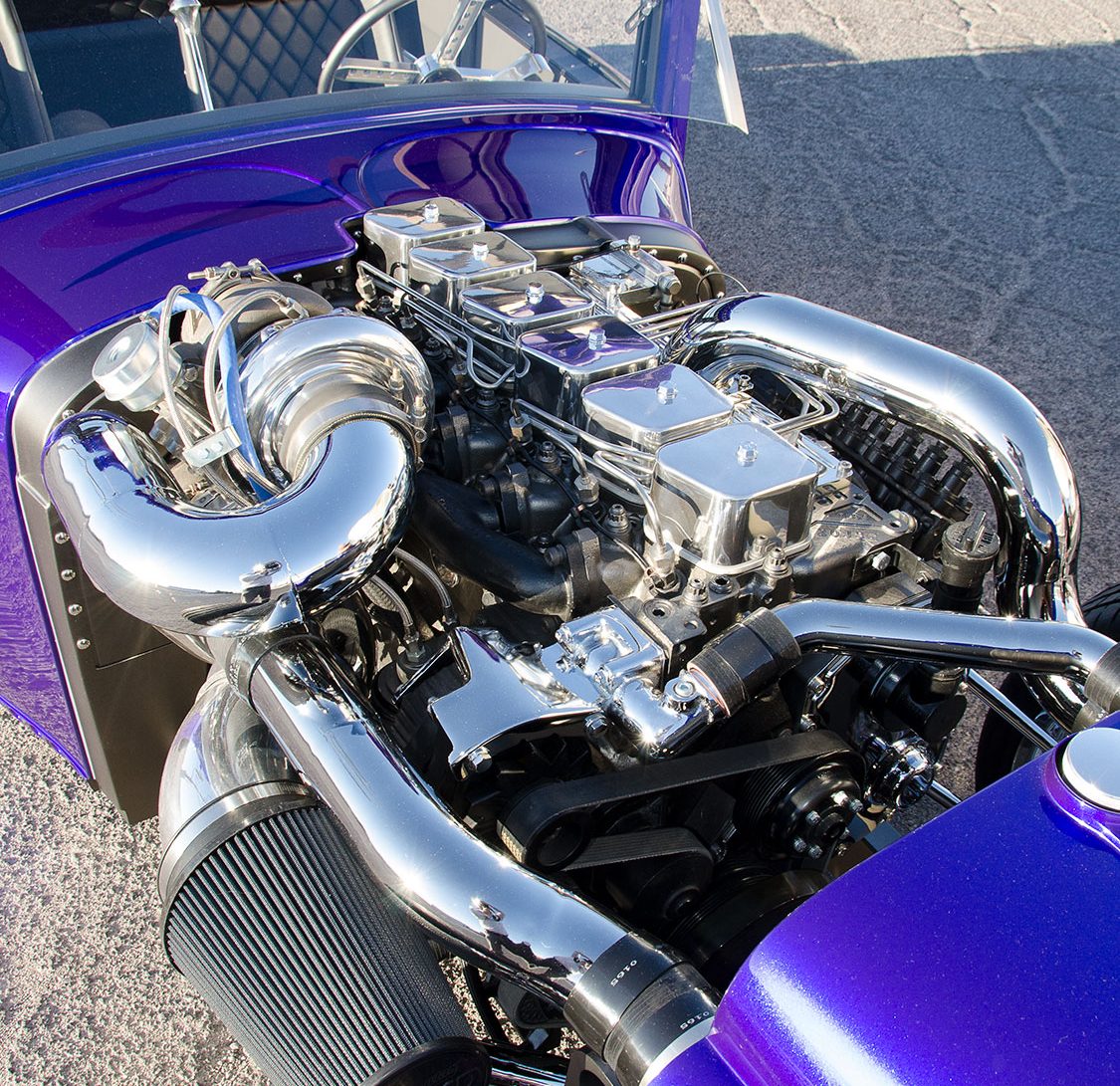
With the wheelbase sorted out, “I ordered a differential and rear clip from Chris Alston Chassisworks,” Faris relates. “And had Pete & Jake’s build me a drop-tube axle.” He then built the 2×4-inch square-tube perimeter frame on his shop table, and installed a four-link rear end and Watts link with Air Spring bags and Bilstein shocks. At the front, the drop axle rides on Posies springs and a Pinto box actuates the steering system. The brake asemblies are 4-piston Wilwoods with Lincoln drum covers and Aeroquip lines.
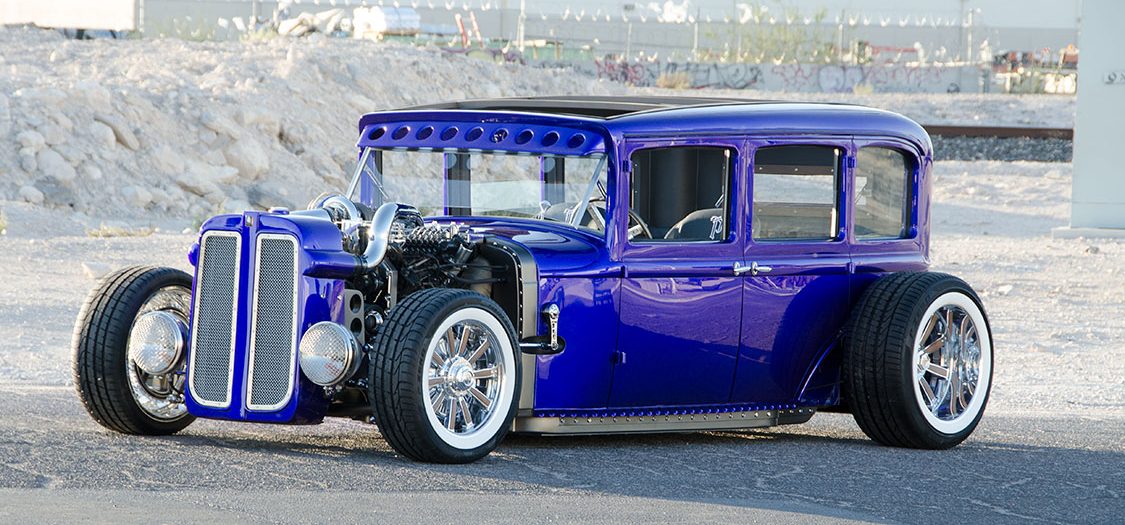
In the meantime, Industrial Injection was building a 5.9L Cummins with a Phatshaft 62 / S474 compound turbo setup, and Bowler Transmissions was putting together a bulletproof 4L80 trans. A Destroked adaptor links the two together. A FASS filter keeps a good clean supply available to the Cummins, and a Dragon Fly injection pump raises the fuel delivery to keep up with the pair of high-performance puffers. A custom intercooler provides plenty of air density as well.
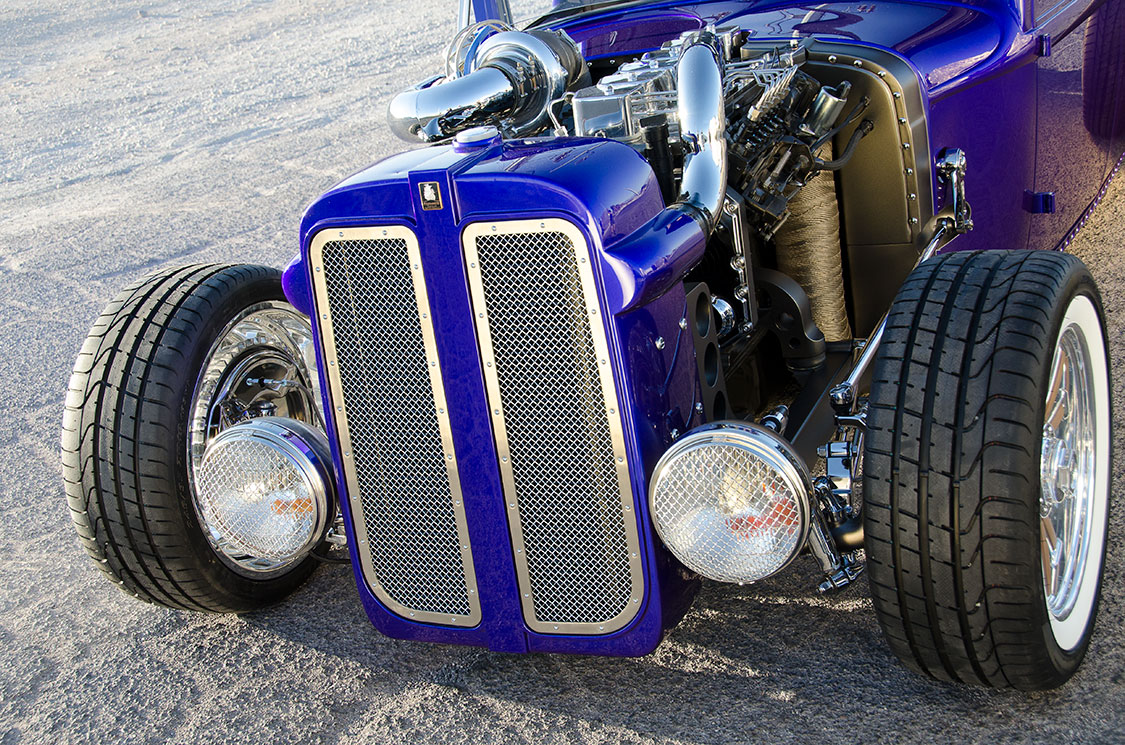
Once those items arrived, Faris had some measurements to work from, so he decided to widen the body three inches to make more room for his client’s kids. Here’s were things start to get a little nutty.
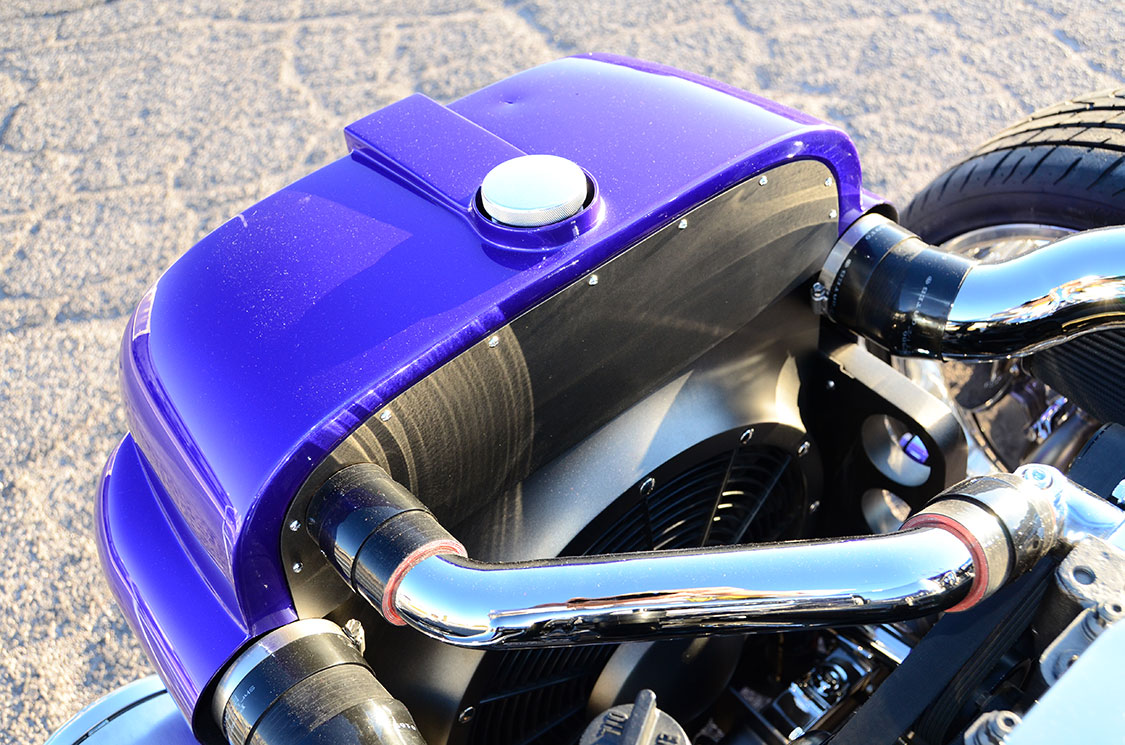
“This meant a lot of fab work,” he admits. “We had to build the hinging front and rear window openings, the whole rear panel, and widen the cowl.” But that was only the beginning of the insanity, as he also had to figure out the best routing for the custom exhaust. It consists of a five-inch pipe flowing into two four-inchers that dump into a Magnaflow seven-inch muffler. In addition, Faris got the harebrained idea of putting some rain caps on the roof, so he had to make that happen as well. The next major obstacle was to get the rear door functioning, which required moving the lower portion of the door jamb forward to allow easier access to the rear seat.
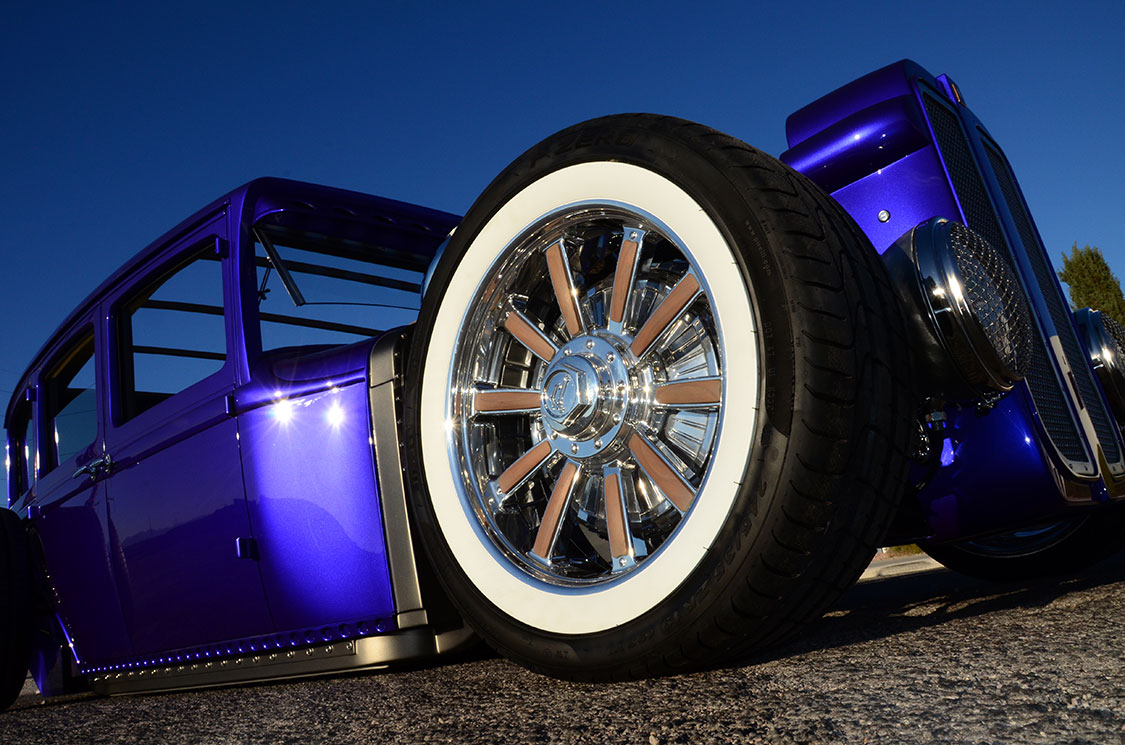
With the overall look of the car sorted out, Faris worked with Mike Miernik of Miernik Design to draw up some details. He penned a rendering that would promote the Plymouth as a SEMA show car. House of Kolor agreed to host it in their booth and supplied a new hue of Indigo Blue. It looks more like Plum Crazy to us, but what’s in a name? Whatever the label, it looks just as sweet. Commenting on the color and intensity of the paint, Faris notes that “it’s got quite a flop on it.” He also applied Galaxy Grey and flat clear as a contrasting color.
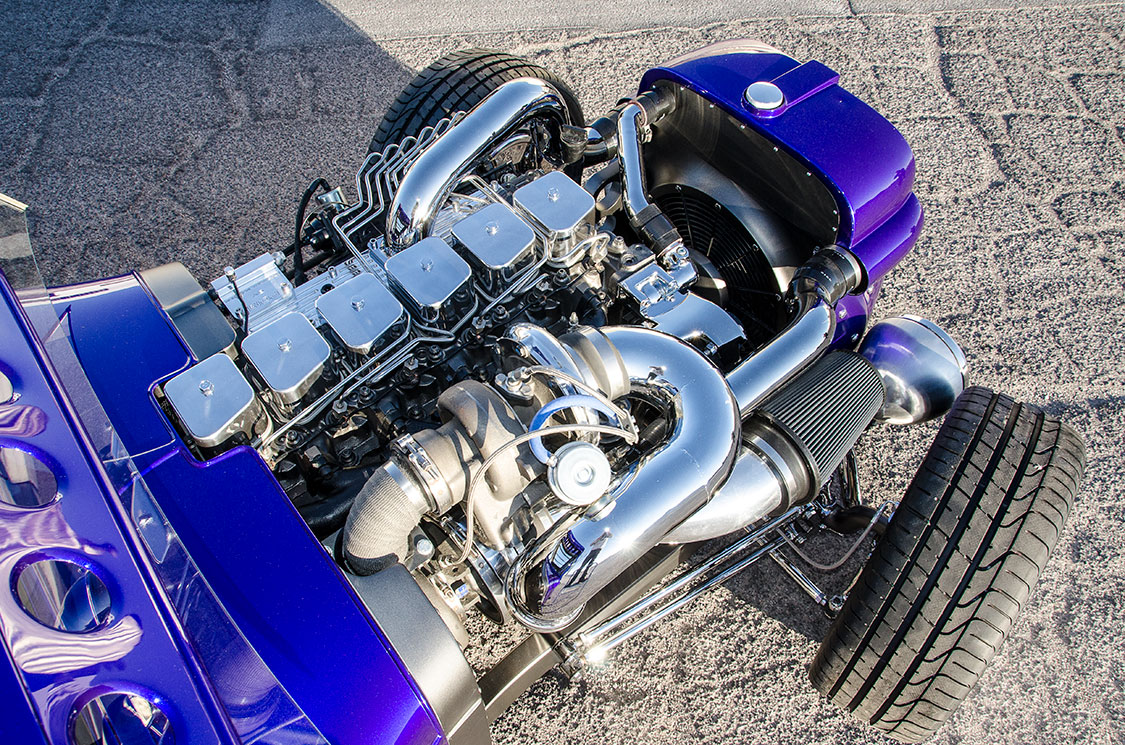
Much more work was left to do with only five months to go before SEMA. “It is very difficult to change directions in mid-project,” Faris points out. “But there’s always a way to get it done.”
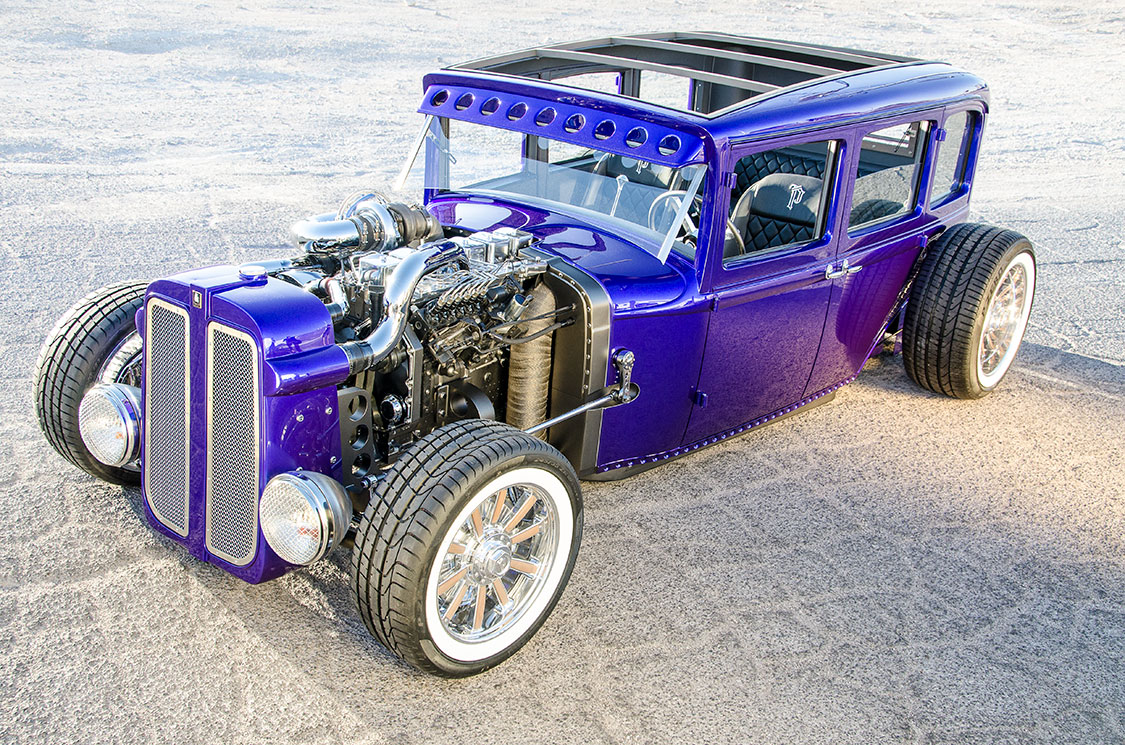
That meant really digging in, and a lot of late nights handling items such as hand-finished brushed stainless on the window frames, headlight and taillight buckets, and grille. The wheels are one-offs designed by Faris and Miernik. They were cut as one-piece rims by Evod Industries and the wooden inserts were machined out of teak. The whitewall is in fact part of the rim, not the tire, giving the car a more vintage flavor.
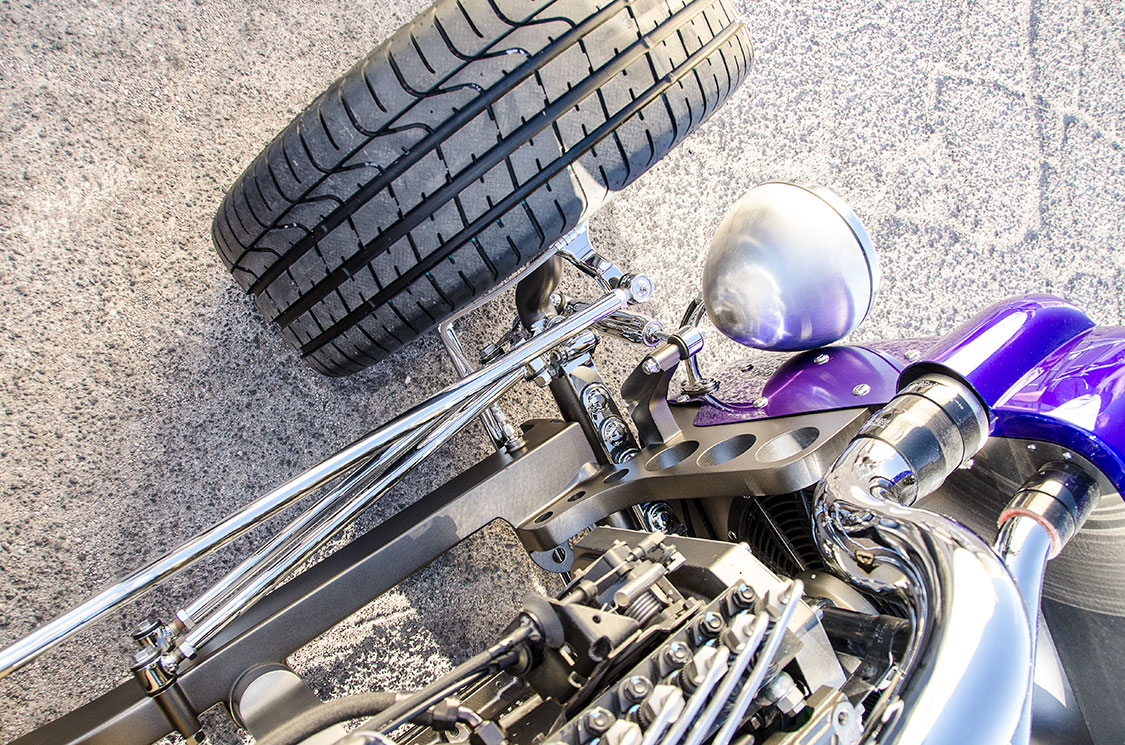
“We tied the old-school feel of the car in with the tuck-and-roll interior design,” Faris points out. The customized hides covering the bomber seats came from Relicate Leather and perfectly match the Galaxy Grey. Carrying the vintage theme further is a classy teak storage trunk mounted on the rear bumper, which echoes the teak veneer wrapping the trans tunnel and dash inserts.
1,200 horsepower and 2,100 lb-ft of torque.
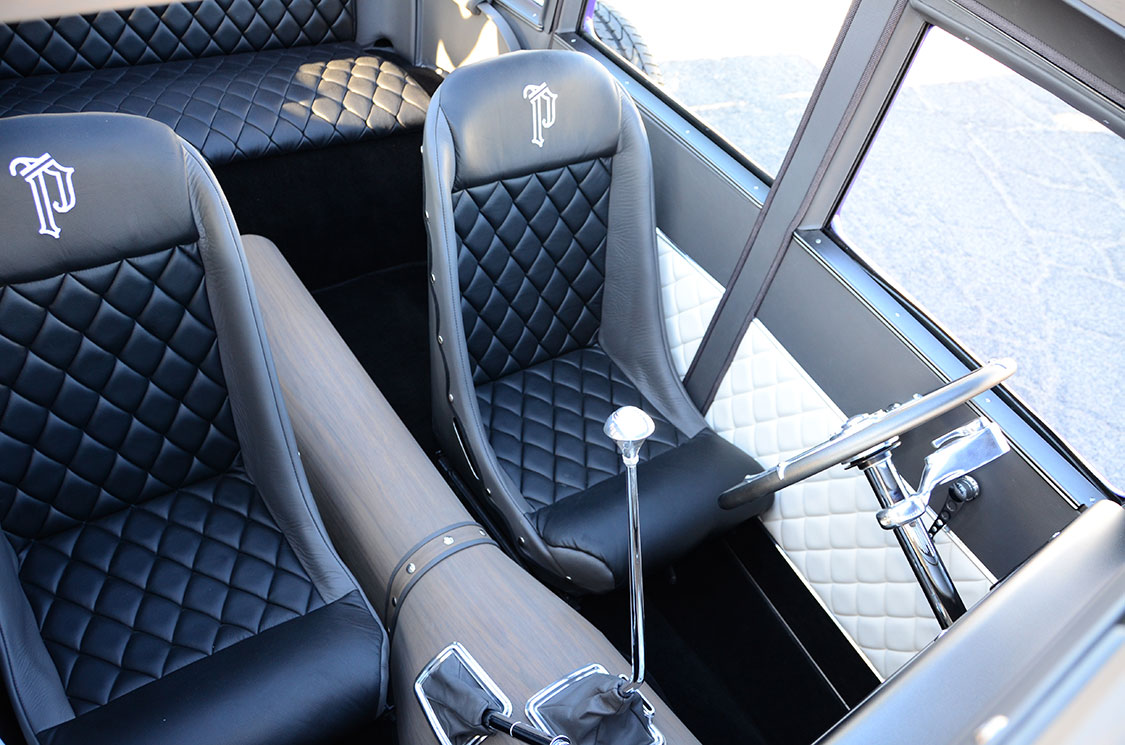
Faris also designed all of the trim and bezels to match and had them machined by Accutec Tool and Die. The dash had to be widened as well (to fit the wider body), and the BOG (Big Old Gauge) cluster was custom built at Classic Instruments to fit with the theme of the car.
The level of detailing went to even higher levels of lunacy. “All the Lokar components, such as the door handles and shifter and e-brake look right at home in the interior,” Faris says. All that remained before the customer took delivery was a custom roll cage.
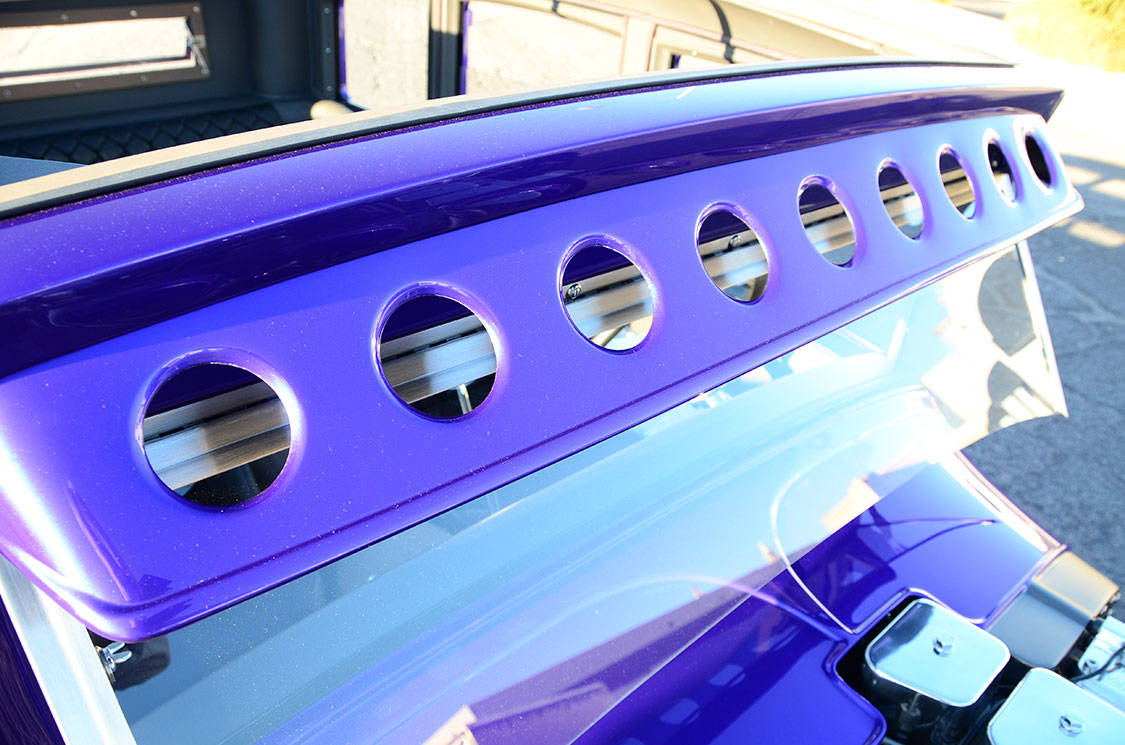
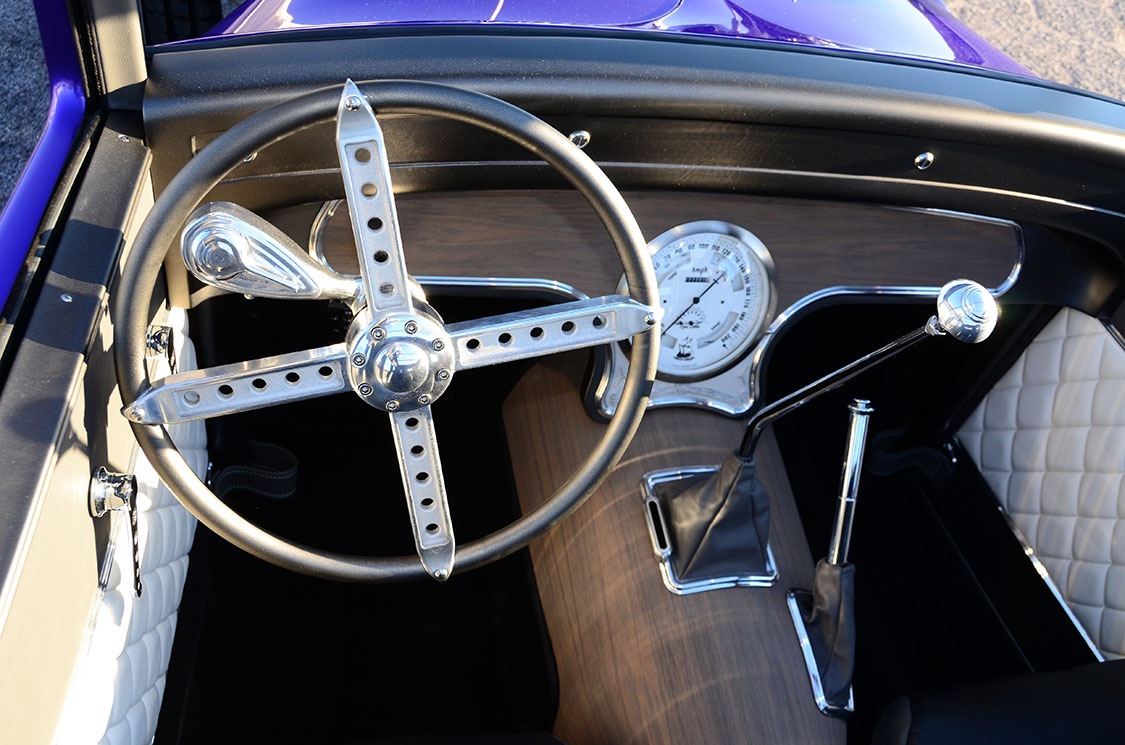
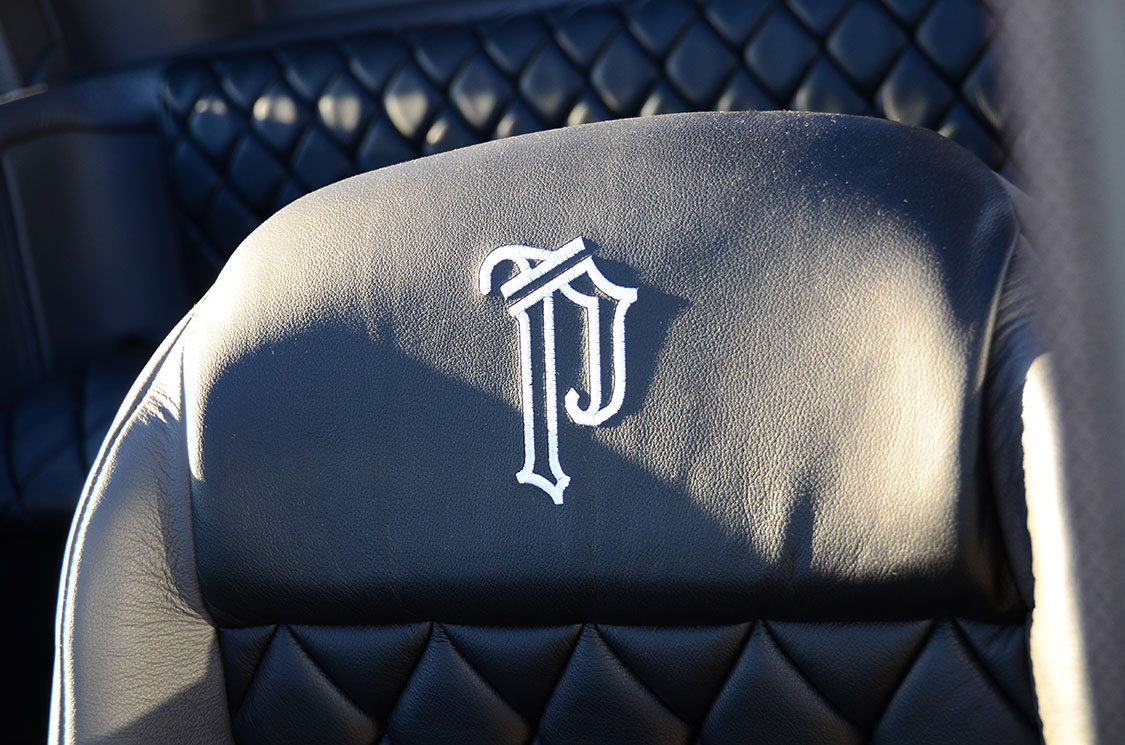
Getting back to the diesel, the difference in output is startling compared with the engine used in the original ’29 Plymouth. Chrysler introduced an inline four-cylinder version of its straight six in 1926 (just as Cummins had a four-cylinder version of its 5.9L straight six). But that’s where any similarity ends, aside from the type of fuels used. The Chrysler displaced less than 2.8 liters and churned out 45 horses. The 1,200hp Cummins delivers 26 times that output, plus 2,100 lb-ft of torque. Is that crazy or what?
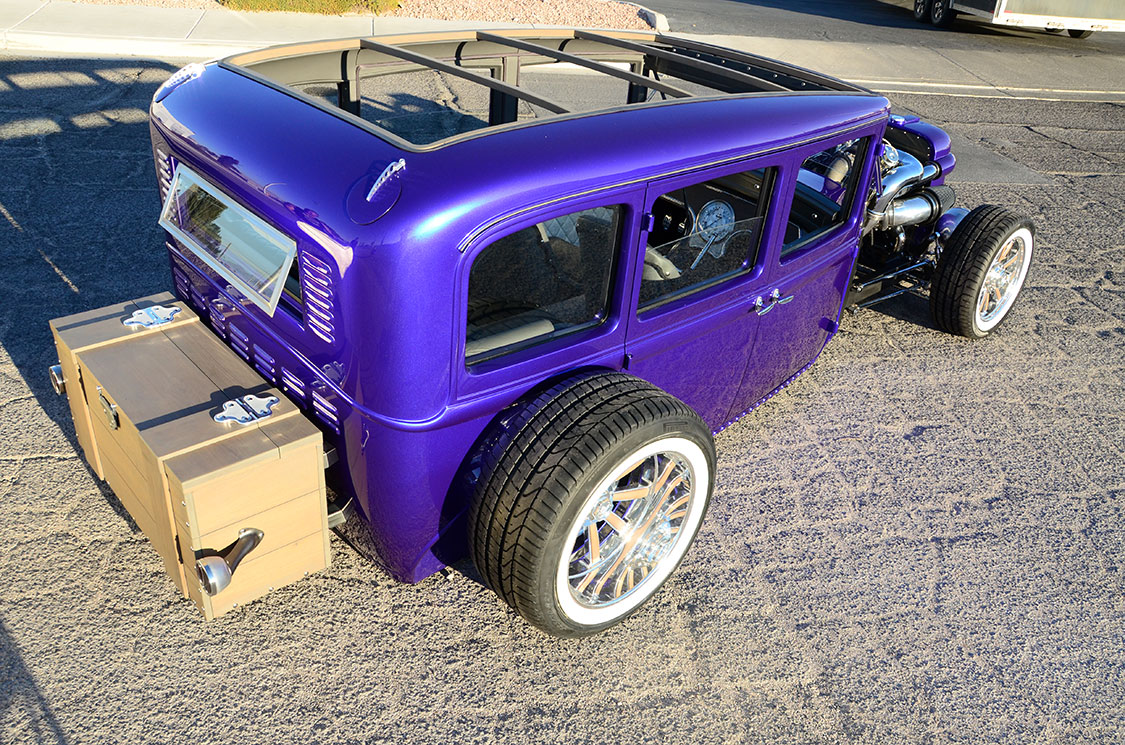
Share Link